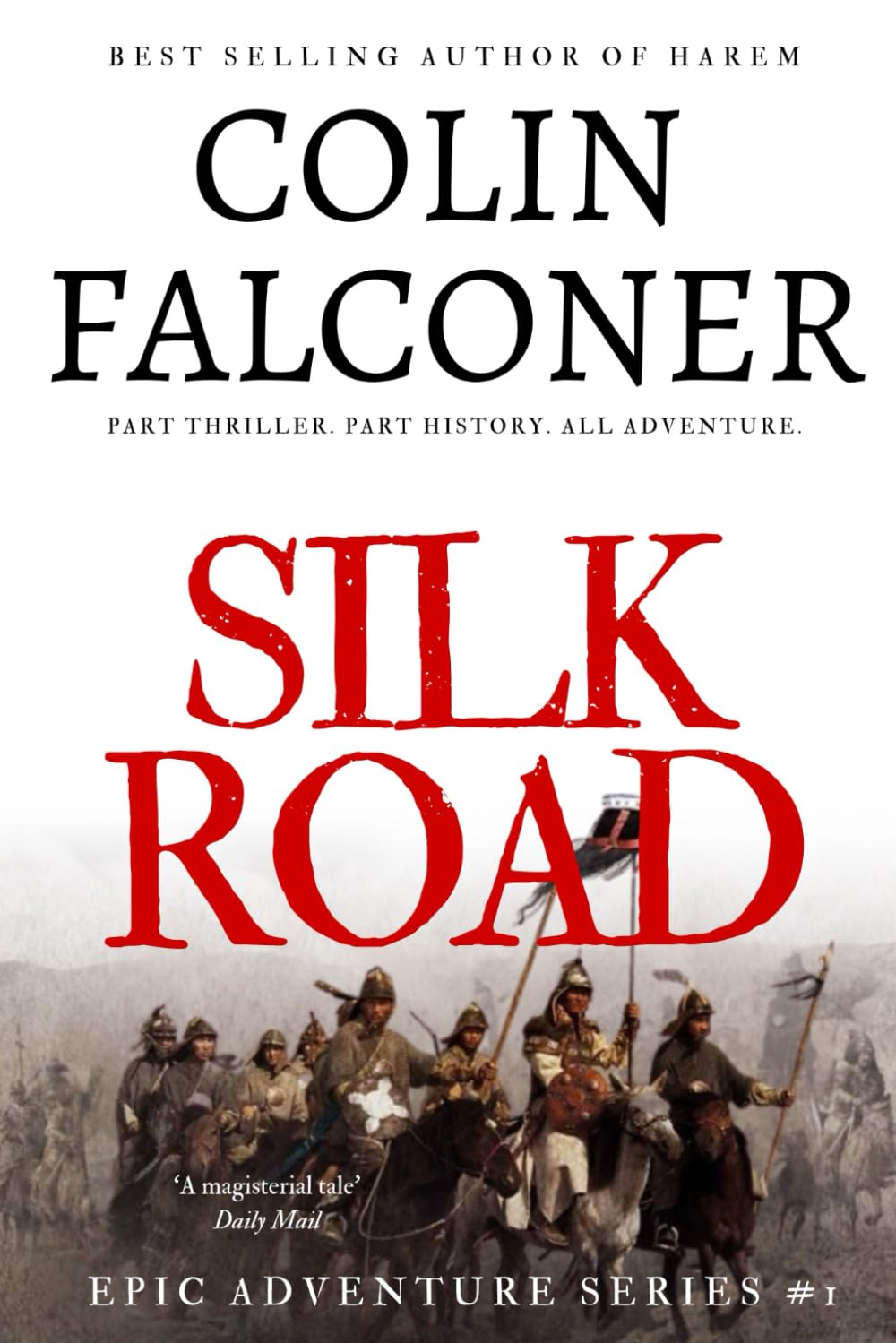Customer Services



Full description not available




T**A
Fun, fun, fun. And interesting as hell!
Fun, fun, fun. And interesting as hell! Religious ideas to rouse the heathens and make the Christians doubt their own faith.
R**K
A VERY GOOD HISTORICAL ADVENTURE.
If you are into historical fiction or action/adventure stories,this one is probably for you. It takes place in the13th century. A Friar is sent by the Pope to spread the word of God to the Mongols. A Templar Knight accompanies him. The Friar is obnoxious and can’t speak the local language. The Templar can and translates for him Misunderstandings occur. The Joanieys on the Road are told with good detail. Plenty of fighting.Good descriptions of culture clashes. TRIGGER WARNING. There is an implied violation scene neat the end of the book. Otherwisw,a good good investment of your time.
B**L
Gripping story, well written, and entertaining
My first read with this author. I’ll be reading some more for sure. You won’t be disappointed with this book
S**G
An epic adventure!
Fast moving with plenty of action. A very difficult book to put down!Looking forward to Colin Falconer's other stories.
K**R
The road to Karakoram (with detours)
A Templar, a Roman Catholic priest and a Moslem Mongol (Tatar) walk into the hall of Kublai Khan. This is not the beginning of a bad joke, but a central event in this novel set in the time of one of history’s turning points. At this time the Mongols have conquered much of the known world, overrunning Russia into Hungary, threatening Syria and assuming rule of China. In the Outremer (Holy Land, Syria/Palestine) Saracen armies have pushed back the Crusaders and retaken Jerusalem. With this backdrop the Pope sends an envoy to the Outremer to negotiate a deal with the Mongol general in Syria to ally against the Saracens. The priest is assigned the Templar as a protector for his journey from the coast to Syria. However, at this moment occurs one of the turning points in history. The Khan of Khans in Karakoram dies. The generals of each of his invading armies is recalled to elect a new great leader, and each invasion stalls. Ultimately, the inability to secure full agreement on a new Khan leads to fratricidal conflict that divides their conquests and stops further invasion (saving western Europe in the opinion of many historians). Understanding all of this and appreciating this novel is helped by reading Conn Iggulden’s series on Genghis Khan and his offspring.The death of the Great Khan changes the mission of the priest and Templar, since the Syrian Mongol general is no longer able to negotiate, and sends them on an even more hazardous journey to the site of the new Great Khan (being elected) in Karakoram across the Silk Road. Early in the journey they cross the territory of a minor Mongol general, who assigns his daughter as their guide for the rest of the journey across the Roof of the World. She of course becomes a love interest for the Templar and antagonist for the priest. Before they can reach the new great Khan, the priest and Templar are captured by raiders sent by Kublai, who has refused to participate in the Khan election, thus setting up the event described in the first sentence of this review.Although this is basically a high adventure novel with attending love story, I found it most interesting for the intersection of cultures, attitudes and philosophies of the primary characters: the obdurate priest, the conflicted Templar, the pseudo-Chinese daughter of Kublai and the daughter of the Mongol general. In contrast to the hardened attitude of the priest (my way or the highway), the Mongols are polytheistic (as long as you pay tribute and obeisance to our Khan, your god is as good as any). Thus, I liked the novel as a metaphor for the religious battles and territorial wars of the current era. Plus ca change, plus c’est la meme change.
K**R
Interesting but disappointing
The length of the book did not deter me. We've all read books where we didn't want them to end. For me this book ended at chapter 71. The descriptions of the Silk Road, where it traversed, how far it really was were the highlights of this story. I had to frequently look up the names of ancient cities to see where they actually existed. The journey itself was a tortuous one with changing landscape. I didn't realize how vast it was. And for me, this was the best part of the book.Now, for the story itself, not so interesting. Initially I was curious about the three main characters. Only one, the female protagonist, kept my interest. The two male characters never changed, developed. They staggered along the same way they started without any new thoughts. One constantly questioning his faith and salvation and the monk blathering on and on about saving heathens. I especially disliked the monks character. Enough already with the whinning and self flagellation. It turns out for all his vanity he is the greatest hypocrite.The culture of the Tartar people, their life, was well described. The insight to other cultures along the Silk Road also provided interest and good reading. That was what kept my interest in the book. After that I skimmed and was not disappointed that I didn't waste more time on the full read.If your looking for a book that describes this time and place, for that it is worth the read. The story in itself was disappointing with a predictable ending of what could not be.
Trustpilot
1 month ago
2 weeks ago